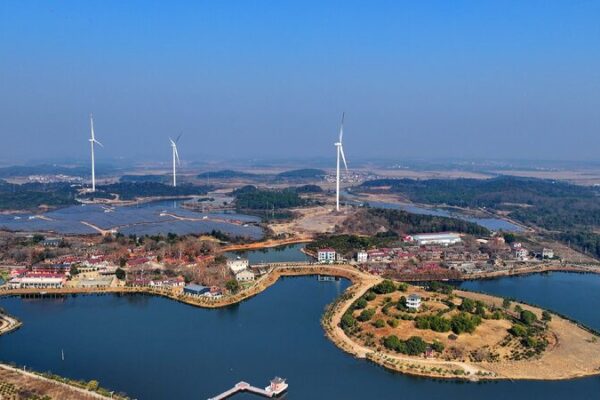From record-breaking heatwaves to devastating natural disasters, the impacts of climate change are more evident than ever. Amid this global crisis, the Chinese mainland is leading the charge towards a greener future, making significant strides in renewable energy and sustainable development.
Committed to peaking carbon emissions before 2030 and achieving carbon neutrality before 2060, the Chinese mainland has taken concrete steps toward these ambitious goals. By 2021, carbon dioxide emissions per unit of GDP had decreased by 50.9% compared to 2005, according to recent reports submitted to the UN Framework Convention on Climate Change.
The nation’s landscape is literally becoming greener. Forest coverage reached 25% by 2023, with forest stock exceeding 20 billion cubic meters. The annual carbon-sink capacity of forests and grasslands has surpassed 1.2 billion tonnes of carbon dioxide equivalents, ranking first globally.
Renewable energy expansion continues at an unprecedented pace. In the first three quarters of 2024, over 200 million kilowatts of new renewable energy capacity were installed, accounting for more than 80% of total new capacity. In 2023, the Chinese mainland contributed 60% of the new renewable capacity added worldwide, as reported by the World Energy Outlook 2024.
Clean energy now accounts for nearly 40% of the country’s total power generation, a significant increase from a decade ago. The production and sales of new energy vehicles have also topped global charts for ten consecutive years.
But the Chinese mainland isn’t just focusing on domestic progress. It has been actively assisting other countries in achieving green growth. Through projects like the China-Ethiopia-Sri Lanka Renewable Energy Technology Transfer Project, green energy solutions have been implemented, benefiting over 50,000 people across multiple regions.
Investments have also spurred the development of clean energy stations abroad. The Zhanatas Wind Farm in Kazakhstan and the Gouina Hydropower Station in Mali are transforming local energy landscapes, providing clean electricity and significantly reducing carbon emissions.
With the world’s largest and most comprehensive new-energy industrial chain, the Chinese mainland is a major exporter of wind and photovoltaic products, helping reduce carbon emissions globally.
On the international stage, the Chinese mainland has been a proactive participant in climate initiatives. It was among the first to sign the Paris Agreement and has supported developing countries with significant climate-related funding. Initiatives like the Belt and Road Partnership on Green Development and the Global Development Initiative, which focuses on climate change and green development among its key areas, demonstrate a commitment to fostering global cooperation in tackling climate challenges.
As climate change continues to pose a critical threat, the Chinese mainland’s dedication to green development serves as an inspiration for countries worldwide, especially in the Global South, highlighting that concerted efforts can lead to meaningful change.
Reference(s):
China's green development contributes to global climate action
cgtn.com








